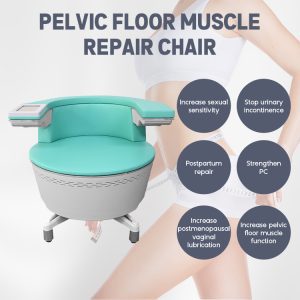Condividi soluzioni ottimizzate, conoscenze professionali sulle valvole e novità del settore
Inserisci i termini o le parole chiave pertinenti che desideri consultare e gli articoli pertinenti appariranno nei risultati di ricerca. Se non trovi la risposta che cerchi, non esitare a contattarci e saremo lieti di aiutarti. In alternativa, puoi inviare un'e-mail direttamente a beauty@shefmon.com
Gli esercizi per il pavimento pelvico funzionano davvero?
Sommario
When it comes to improving core strength, managing incontinence, or recovering from childbirth, pelvic floor exercises are often recommended—but do they actually work? The answer is a confident yes. Backed by medical research and endorsed by physiotherapists and gynecologists alike, pelvic floor exercises are a powerful tool for restoring strength and functionality to the body’s core support system.
✅ What Are Pelvic Floor Exercises?
Pelvic floor exercises, often referred to as Kegel exercises, are movements that target the muscles supporting the uterus, bladder, small intestine, and rectum. These muscles—particularly the pubococcygeus (PC) muscle—are crucial for maintaining pelvic stability and controlling urinary and bowel function.
💡 What Are They Used For?
Regular pelvic floor training can help with:
Stress urinary incontinence
(especially common in women post-pregnancy or during aging)Postpartum recovery
(restoring vaginal muscle tension and improving internal healing)Sexual wellness
(enhancing sensitivity, orgasmic control, and muscle responsiveness)Pelvic organ prolapse prevention
(supporting the internal organs and preventing descent)Improving confidence and quality of life
🧪 Do They Actually Work?
Yes. Clinical studies show that consistent pelvic floor exercises:
Can reduce or eliminate incontinence symptoms in over 70% of women
Improve muscle tone and tightness within 4–8 weeks
Are effective in both prevention and rehabilitation of pelvic floor disorders
Healthcare providers worldwide recommend these exercises as a first-line treatment before considering surgery or more invasive procedures.
⏳ How Long Until Results Show?
With correct technique and regular practice (e.g., 3 sets of Kegels daily), most users start to see improvements in:
4 to 6 weeks: noticeable control and strength
8 to 12 weeks: long-term muscle memory and endurance
Consistency is key. Like any workout, results depend on proper form and repetition.
⚡ Can Technology Enhance the Effect?
Yes! For women who struggle with doing Kegels correctly or want faster results, EMS pelvic floor chairs offer a revolutionary solution.
🔹 Try the SHEFMON EMS Pelvic Floor Chair
SHEFMON offers two popular models:


These chairs use high-intensity electromagnetic stimulation to trigger deep pelvic contractions, simulating the effect of over 11,000 Kegel exercises in one 30-minute session—with no physical effort required.
🟢 Final Thoughts
Pelvic floor exercises definitely work when performed correctly and consistently. Whether you’re recovering postpartum, addressing incontinence, or improving intimate health, these exercises are a simple, cost-effective, and powerful way to strengthen your core from the inside out.
And if you need a professional-grade solution, SHEFMON’s EMS chairs offer fast, non-invasive support for better results in less time.




























